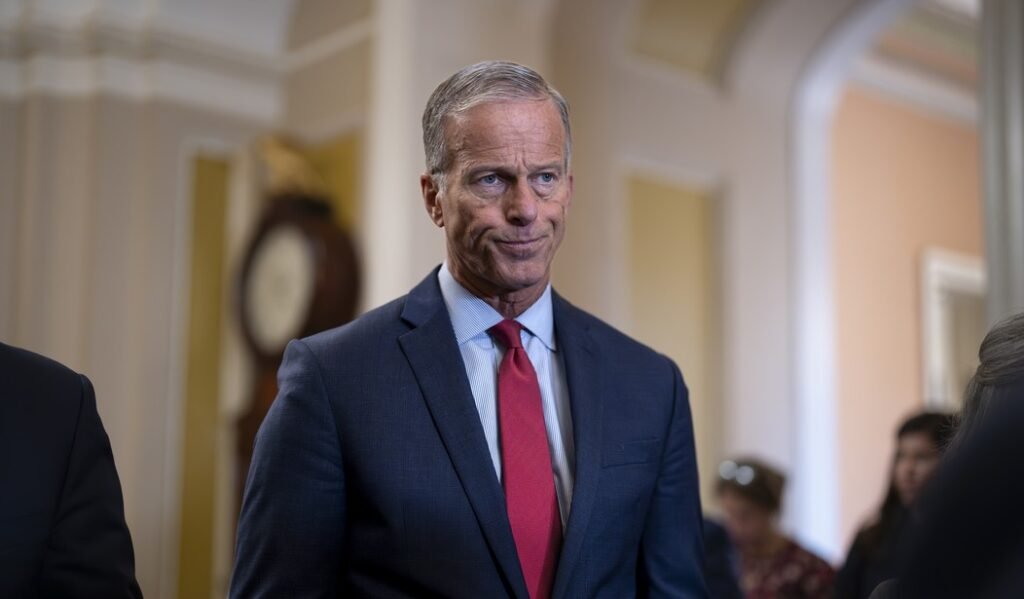The latest federal budget bill has earmarked $10 billion in border security funding for states that have spent their own money on securing the U.S. southern border. This decision, which marks one of the largest reimbursements of its kind, is drawing both praise and controversy as debates around immigration policy continue to intensify across the country.
This article explores the details of the funding package, its implications for border states, reactions from key political figures, and what it might mean for future border security measures.
Why the $10B Border Security Funding Matters
The inclusion of $10 billion in border security funding in the federal budget bill signals a significant shift in how the federal government supports state-led immigration enforcement. Historically, border control has primarily been a federal responsibility, managed by agencies like U.S. Customs and Border Protection (CBP). However, over the last several years, many states—especially those along the southern border—have taken independent action to bolster security in the face of rising migrant crossings and drug trafficking.
These actions have included:
- Deploying state law enforcement and National Guard troops to the border
- Constructing physical barriers such as fences and walls
- Implementing high-tech surveillance systems
- Running independent operations to intercept illegal crossings
States like Texas and Arizona have spent billions of dollars on these efforts, often citing federal inaction as the main reason for stepping in. The new funding essentially reimburses these states for past expenses, setting a new precedent in state-federal collaboration—or conflict—on immigration.
Which States Benefit from the Budget Bill?
Not all states will receive a share of the $10 billion. The funds are specifically directed at states that have already spent significant resources on border enforcement, particularly those that:
- Have direct borders with Mexico: Texas, Arizona, California, and New Mexico
- Have implemented their own security operations and tracking systems
- Have provided documented evidence of past spending on security operations
Texas, for example, is expected to receive the largest portion of the funding due to its multi-billion-dollar Operation Lone Star initiative. This program involved deploying thousands of National Guard troops, building temporary barriers, and detaining migrants in state jails.
Arizona and Florida, which have also conducted aggressive border security operations, are likely to receive substantial reimbursements. Florida’s involvement, though geographically distant from the border, is justified by its deployment of law enforcement personnel and equipment to assist Texas and Arizona.
Federal and State Tensions on Border Policy
The $10 billion in border security funding does not come without political tension. In recent years, several Republican-led states have criticized the federal government for what they describe as a “crisis” at the southern border, driven by weak immigration enforcement and overburdened federal agencies.

By providing reimbursements, the Biden administration appears to be acknowledging—at least partially—the role states have played in border management. However, some critics argue that this move might encourage states to bypass federal oversight in the future.
“We should be investing in a coordinated national strategy, not rewarding fragmented state efforts,” said one senior Democratic lawmaker.
On the other hand, supporters of the bill argue that the funding is long overdue.
“Texas stepped up when the federal government failed. This reimbursement is a recognition of our commitment to protecting our citizens,” said Governor Greg Abbott of Texas.
How the Funds Will Be Allocated
The $10 billion in funding will not be distributed evenly. Instead, it will follow a reimbursement model, where eligible states must:
- Submit proof of expenses related to border enforcement since January 2021.
- Demonstrate that the funds were used for security-specific purposes like fencing, surveillance, personnel, or detention facilities.
- Undergo a federal audit to confirm the authenticity and legality of the expenditures.
States will be reimbursed only for qualifying expenses, and a portion of the fund will be reserved for future emergency responses in case of border surges.
Support and Opposition: Voices from Washington and Beyond
The decision has sparked a mix of reactions in Washington, state capitals, and among policy experts.
Supporters say:
- It acknowledges the burden states have shouldered in border protection.
- It promotes a shared federal-state responsibility for immigration enforcement.
- It can serve as a deterrent against future illegal border crossings.
Critics argue:
- It sets a dangerous precedent of encouraging state militarization of the border.
- It could deepen division over national immigration policy.
- It redirects funds from other urgent federal priorities like healthcare and education.
Immigration advocates have also raised concerns about the humanitarian consequences of increasing enforcement budgets.
“Throwing money at militarized border tactics doesn’t solve the real issues—poverty, violence, and asylum needs in home countries,” said Marisol Rodriguez, spokesperson for Human Rights Watch.
Impact on Immigration and Border Enforcement
With this new wave of border security funding, states will likely ramp up their current operations or plan future expansions. This could include:
- Extending border walls or fences
- Increasing aerial surveillance and drone usage
- Expanding detention centers for undocumented migrants
- Enhancing technological tools like biometric scanning and facial recognition
Critics warn that such expansions, while potentially effective in reducing illegal crossings, often come at the cost of civil liberties and humanitarian obligations.
However, the Biden administration has clarified that the funding must comply with federal standards, including respect for asylum rights and international law.
What This Means for the Future of U.S. Border Policy
The inclusion of this $10 billion reimbursement in the federal budget could lead to lasting changes in how border enforcement is managed. It may also fuel a larger debate about who should be responsible for immigration control—states, the federal government, or a coordinated combination of both.
Key takeaways for the future:
- More collaboration: States and federal agencies may need clearer coordination frameworks.
- Budget battles ahead: Future federal budgets may need to allocate more consistent funding for border issues to avoid state intervention.
- Policy reevaluation: Both parties may push for a renewed look at immigration reform, asylum laws, and visa programs.
The outcome will likely shape not just policy, but also the 2026 midterm elections, where border security will remain a hot-button issue.
Conclusion: A Turning Point in Border Politics
The $10 billion in border security funding included in the budget bill represents a significant political and fiscal moment in the ongoing immigration debate. While it offers relief to states that have shouldered massive security costs, it also raises questions about the future of border policy, federal authority, and humanitarian responsibility.
As border encounters remain high and political tensions continue, this new funding may mark either a path toward greater unity—or deeper division—in America’s approach to one of its most contentious issues.
Read Next – Donald Trump Antisemitic Remark Sparks Criticism Across U.S.





